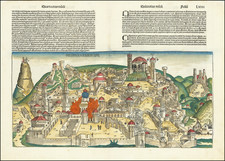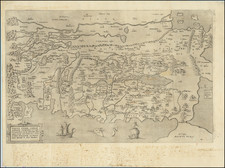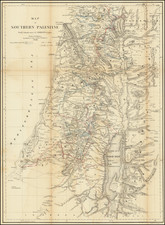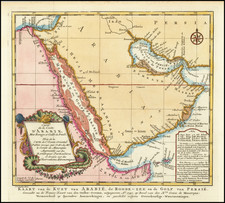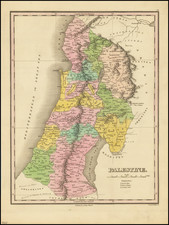A Map of Ancient Lands
Facinating map showing the regions between the Promised Land and the borders of Elam or Persia, as they were known in ancient times." Stretching from Susiana and the Tigris River to the Mediterranean, this map traces the territories of key biblical groups.
I. The Descendants of Lot
The Moabites and the Ammonites, originating from the offspring of Lot, Abraham's nephew, occupied the eastern regions of the Jordan River, encompassing the region of the Dead Sea. Lot, whose life and escape from the sinful cities of Sodom and Gomorrah are narrated in Genesis 19, fathered Moab and Ben-Ammi through his two daughters. The Moabites settled in the mountains to the southeast of the Dead Sea, establishing Moab, while the Ammonites occupied the region to the northeast of the Dead Sea, forming the kingdom of Ammon.
II. The Ishmaelites and Hagarenes
Ishmael, Abraham's first-born son through Hagar, Sarah's maidservant, became the patriarch of the Ishmaelites. These nomadic tribes, listed in Genesis 25:12-18, dispersed throughout the Arabian desert, marking an expansive territory. Each of these tribes, from Nebajoth to Kedemah, had their distinct regions and roles in biblical history, often interacting with their Israelite neighbors, sometimes as allies, and at other times, as adversaries.
III. The Sons of Keturah
After the death of Sarah, Abraham remarried to Keturah. Their descendants, as enumerated in Genesis 25:1-4, settled around the regions of the eastern sides of the Dead and Red Seas. The Midianites, descending from Midian, are perhaps the most renowned among them, especially due to their interactions with the Israelites, most notably during the time of Moses and Gideon.
IV. The Idumeans or Edomites
Esau, Jacob's twin brother and Isaac's eldest son, became the progenitor of the Edomites. They established their dominion in the rugged mountainous region between the Dead Sea and the Red Sea, known historically as Edom or Idumea. The Edomites, while kin to the Israelites, often had tumultuous relations, which were characterized by territorial disputes and wars.
Biblical History of the Region
The chronicles of these tribes and their interactions are densely woven into the tapestry of biblical history. Their stories emerge from the earliest days of Abraham's covenant in the 2nd millennium BC to the Israelites' return from the Babylonian exile in the 6th century BC. Events like the Israelites' request to pass through Edomite territory during their Exodus from Egypt (Numbers 20:14-21) or the Moabite woman Ruth's loyalty that places her in the lineage of King David and subsequently Jesus (Book of Ruth) are testaments to the intertwined destinies of these tribes.
The main text box translates as follows:
The collateral families of Abraham's house had their residences...
I. The descendants of Lot, the Moabites and Ammonites, on the eastern side of the Jordan in the region of the Dead Sea.
II. The sons of Ishmael, known by the names Ishmaelites and Hagarenes, divided into these twelve tribes: Nebajoth, Kedar, Adbeel, Mibsam, Mishma, Duma, Massa, Hadar, Tema, Jetur, Naphish, and Kedemah, initially settled here and there in the Arabian desert.
III. The sons Abraham fathered with Keturah after Sarah's death, namely Simran, Jokshan, Medan, Midian, Ishbak, and Shuah, lived on the eastern side of the Dead and Red Seas.
IV. The descendants of Esau, known by the names of the Idumeans or Edomites, namely Eliphaz, Reuel, Jeush, Jaalam, and Korah, lived between the Dead and Red Sea."









